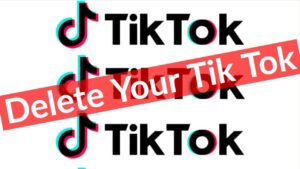Macroeconomics 106
The big news today is the Treasury Department is preparing to ask for another $200,000,000,000 (200B) for small business loans. As of Monday morning, the news was that about 100,000 loans had been approved so far, totaling $30,000,000,00 (30B) of the original $250,000,000,000 (250B).
It could be that the experts severely miscalculated how much money small businesses would need, and this was actually suggested on the Freakonomics podcast I recommended last week. It could also be that the availability of free money convinced many small businesses to shut down when they wouldn’t have, otherwise. Think about it.. “We can work hard and barely scrape by, OR! We can stop working and get paid.” My own guess is a mixture of both factors (experts miscalculating and nudging more small businesses to claim money). By the way, when I say “free money”.. technically, these are considered loans that will be forgiven as long as the borrowers follow the rules set out in the bill. If you break the rules (and get caught), you’ll owe the loan amount and 1% interest. There are definitely unseen/implicit costs associated with going to the bank and standing in line, filling out the paperwork, jumping through hoops, etc., and I’m sure there are plenty of applicants who are just now realizing how high those costs may get.
Wells Fargo announced Sunday night that they would no longer be taking applications for these small business loans, called the “Payment Protection Act”. If you read that story, it’s quite a rabbit trail. Basically, Wells Fargo said they are at capacity and cannot process any more loans. They are only *allowed* to loan out $10,000,000,000 (10B) in this program, and the total value of their assets under management is legally capped by the Federal Reserve at $2,000,000,000,000 (2T). This cap is part of a larger punishment back in 2018, which Wells Fargo earned for “widespread consumer abuses”, including convincing its customers to buy unnecessary insurance and opening millions of fake accounts. Back to the present, it certainly appears Wells Fargo is attempting to leverage the situation into getting the cap removed.. something like “it would be a shame if these cap restrictions prevent us from helping small businesses, wouldn’t it?”
Confession: I’m biased. I dislike Wells Fargo and I dislike even more that when I took out a loan to buy my first house the local lender sold my loan to Wells Fargo so I’m forced to do business with them when I would never choose to otherwise.
I’m supposed to close on a refinance today, i.e., I’m taking out a new loan on my primary residence and using it to pay off the remaining balance on my old loan. It’s been a long, grueling process, starting back on February 10. Why refinance? I was able to lock in an interest rate 1.5% lower on the new loan. That’s a stand-up triple, if not a home run!
The local company I decided to work with specializes in fast turnaround times, and it was supposed to take well under four weeks (a month is typical), but they have faced overwhelming demand for refinances and new loans, which started late February and exploded when the Federal Reserve lowered the federal funds rate to zero on March 15 (I’ll write about this soon). With all the craziness lately, the company is adding new hurdles like reconfirming “verification of employment” (which was already a hassle a couple weeks ago), and asking me to send more recent paycheck stubs (double-checking my teacher’s salary).
Pause. This post gets pretty technical and I don’t want it to be a downer, so here are a couple song recommendations to help you make it through.
We both got fired on exactly the same day
Well, we’ll float on, good news is on the way
Oh, here comes trouble
These people talk too much, need to shut ’em up
Yeah, I’d rather be alone
We’ll have the days we break
And we’ll have the scars to prove it
We’ll have the bonds that we save
But we’ll have the heart not to lose it
In the normal scheme of things, we don’t really question where money comes from or how the system works. We only pay attention if it stops working, or, perhaps, when we see our government follow up the biggest spending bill in history by casually mentioning it may add a few hundred billion a few weeks later. The American Recovery and Reinvestment Act of 2008 under President Obama was initially billed at under $800,000,000,000 (800B), as a reminder, and here we find ourselves talking about The CARES Act as “2 Trillion” just because it’s easier to say than “2 point 3 Trillion”! Two syllables, three hundred billion dollars. That’s why I’ve started typing out the zeroes.
When you’re dealing with that amount of money, slipping in $75,000,000 for PBS, or $93,000,000 for Congress, seems like small potatoes by comparison. This is the concept of “pork“—including unrelated funds for special interests into a larger bill. U.S. Representative Thomas Massie (R-KY) was the only congressman to even hint at hesitating to vote for the bill, and immediately became public enemy number one. When everyone is getting paid, don’t get in the way.
So, where does the U.S. Treasury get money from, when it spends more than it raises? Contrary to popular belief, it doesn’t just “print” it, or at least, not technically. It borrows the money! What a relief.
It starts with the Treasury putting up bonds for purchase. Bonds, in the simplest terms, are requests for loans offered by large corporations and governments. If you purchase the bond, the corporation or government agrees to pay you some fixed or variable amount of money over the course of the bonds maturation, then pay the total amount back at the end. In the meantime, they can spend your money. Normally, when you think of loans, you think of a bigger institution loaning to a smaller institution or a private citizen. Bonds are what happen when you flip that relationship, more or less. Since there is no single bank or person who can loan the government 2,300,000,000,000, the Treasury sells bonds which are worth chunks of that amount. Bonds are considered a “safe” investment, and the larger the institution you are loaning to, the safer they are, because it’s less likely to fail and stop paying you. The U.S. Treasury bonds are considered the safest in the world, for the time being.
This seems like a good time to mention a “safe” investment will not get you a high rate of return. It’s low-risk, sure, but you’re going to be earning tiny amounts of interest. Uncertainty is a necessary condition for profit, and bonds are *sure things*. The U.S. Treasury maximizes their position of strength by selling bonds at auction, where the bidders are competing to accept the lowest interest rate. If you want to bid, you can do so here—individuals can access bonds as low as $1,000 or as high as $5,000,000.
Treasury bonds are called “T-bonds” (they must have a maturation date of 10+ years, but you can sell them on the secondary market if you want to get rid of it sooner), and there are four types, broken down here. So, who all buys these bonds, and who owns our 23,600,000,000,000 (23.6T) of debt? You may have seen scary stories about China owning our debt, but in reality China only holds about $1,000,000,000,000 (1T). That’s slightly less than Japan, and together they hold about one-third of our total foreign debt (a number which has increased significantly in the past decade, however). It’s all laid out here, if you want a moderately deep dive on who owns U.S. debt.
The single largest purchaser of T-bonds is our own Social Security Trust Fund, and in total about a quarter of the national debt is considered “intragovernmental”, meaning one part of our government owes another part money. When Social Security looks to invest their holdings that they need to pay out way in the future, one of the things they invest in is T-Bonds (and it’s the same with many other government retirement funds!). The other 75% of the total U.S. debt is held by the “public”, which includes everything from foreign governments to the girl next door. Of that amount, about 11% is owned by the U.S. Federal Reserve, which is where things gets really interesting (or is this just me?). The Fed isn’t part of the government, so it qualifies as “public.” No, really, check the Constitution, it’s not in there.
For those of you who want to talk about the government “printing money” and be accurate, start paying attention because this is as close as it gets [and no, U.S. Mints don’t actually print money, either, you’re thinking of the Bureau of Engraving and Printing]. When the Federal Reserve purchases U.S. T-bonds, it is using credit that didn’t exist prior to the purchase, it’s made up. The loophole is that “The Fed” is separate from the Government (unlike “the Feds”, who are very much part of the federal government). Central Banks act as the “lender of last resort“; if every other option fails, we can use our central bank to buy our own debt! We have been able to get away with this because, as long as we don’t over-do it, U.S. T-bonds are still considered safe and reliable. What do I mean by “over-do” it? I don’t know; no one does. There is a tipping point where U.S. T-bonds are downgraded and trigger the implosion of the entire system, but that point is off the edge of the map we’re using, it’s uncharted territory. The good news is that this scenario would be disastrous for the global economy, so none of the power players are incentivized to want this to happen.
To summarize, when the government needs to raise funds it doesn’t have, it borrows money by selling T-bonds. In theory, anyone can buy T-bonds, but the government can control who it sells them to. As a last resort, the government can borrow from the Federal Reserve, which *basically* “prints” the money to buy the T-bonds. If this system is abused, it will break down.
This got heavy, fast. I apologize. I really just wanted a springboard to start talking about open market operations and quantitative easing down the road…
Yes, I am proud of digging up a “feel good” song that talks about bonds in my post about bonds. That whole album is solid, for the record.
Oh, here’s one more song:
[Chorus]
We’re gonna be alright


